Anaerobic Fermentation, Saccharic, Lactic, Skin Contact — you might have seen these terms on our offers list lately. We call these “Special Preps”, and the names all refer to different methods of fermentation which lead to unique and novel flavours in the cup.
However, there are a lot of different terms for these new styles of fermentation and processing, which can be confusing for roasters and their customers. Here is a guide to the names we use for our special preparation coffees. If the terms we use are not 110% scientifically accurate, we beg your forgiveness. We are coffee importers, not scientists. 🙂 Special thanks to Francisco Velazquez from @we_are_coma for consulting on the correct bio-chemistry terms.
The process definitions for our special preparations are divided into two. First we list the fermentation, followed by the processing. What is the difference?
Processing
This refers to the way the coffee is dried, and is usually divided into three categories, washed, honey or natural.
A quick recap on processing:
Washed
The skin and mucilage is removed mechanically or broken down by enzymatic reactions or fermentation, before the parchment is dried.
Honey
The skin is removed and the parchment is dried with the mucilage remaining on the parchment. We will generally use honey as the term unless it is from a Brazilian producer, in which case it is called Pulped Natural. The process is basically the same.
Natural
Cherries are typically harvested and then transferred to a mat, patio or drying bed fruit and skin intact. Fermentation will take place (or continue) individually inside each cherry.
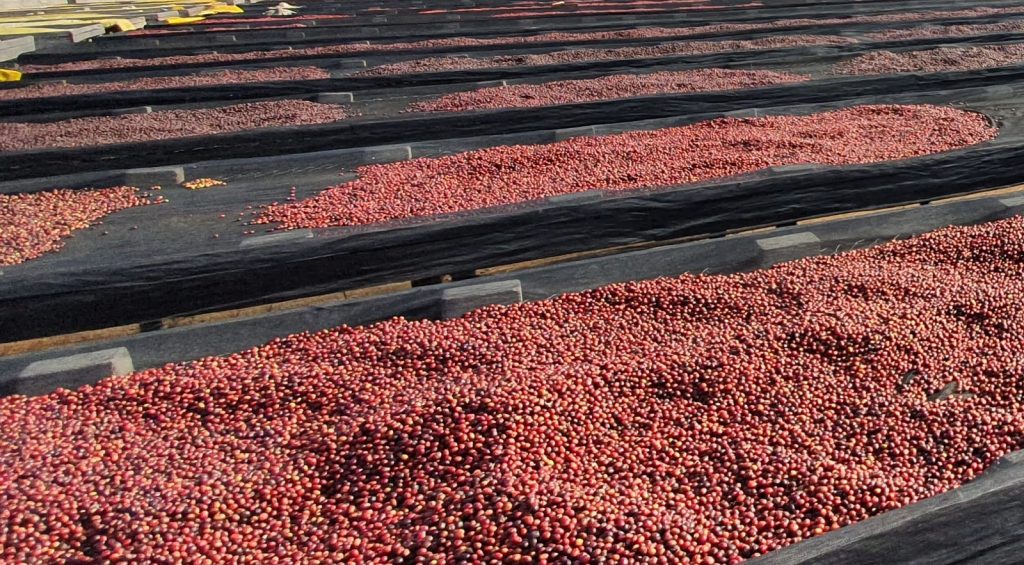
Natural process: cherries on drying tables 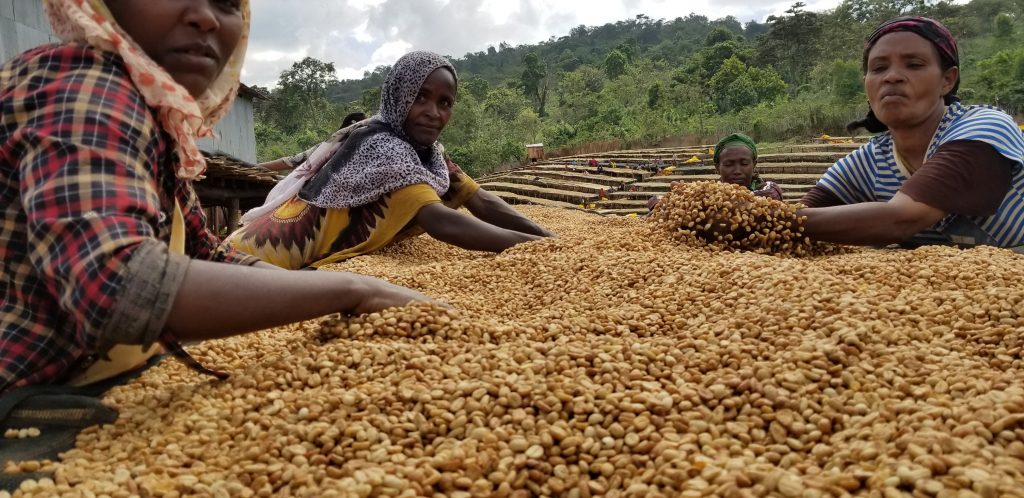
Honey process: parchment with mucilage still attached on the drying table 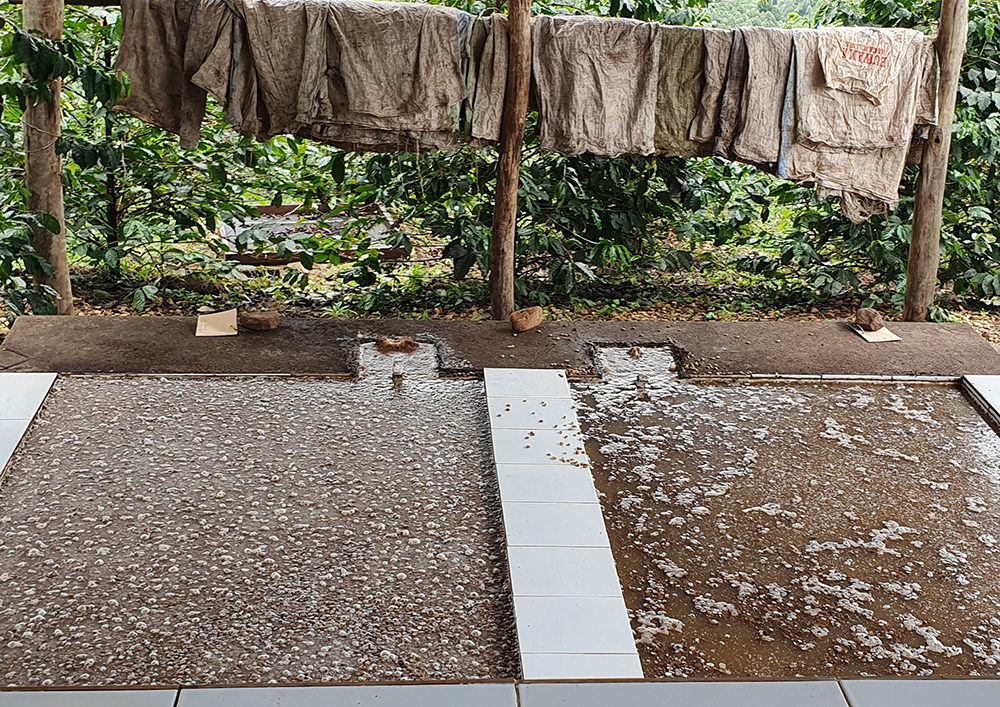
Washed process: parchment is fermented in water using the wet process
Fermentation
All coffee, no matter how it is processed, goes through some fermentation and bio-molecular breakdown. The degree to which this happens is what the producer will try to control.
Fermentation is a metabolic process in which microorganisms such as bacterias and yeasts alter the bio-compound composition in the coffee fruit as a whole. The main metabolic reaction is the leverage of coffee carbohydrates, mainly sugars and starch in the skin and mucilage, as an energy source for naturally embedded or inserted microorganisms. From the moment that the coffee is picked, or maybe even before, molecular modulation of flavour takes place.
We’ll go into more detail on the factors a producer can control during fermentation in Part 2 of this blog series. For now, we’ll cover the various styles of fermentation you are likely to see in our offers list.
Dry or wet fermentation
Most countries use dry fermentation as a standard for washed coffees, especially in South and Central America. This means the coffee is depulped to remove the fruit and skin before it’s placed in a vessel without water, often a tiled tank. The coffee seeds are immersed until the mucilage is broken down, then it is rinsed, washed, graded and dried.
Wet fermentation, meaning fermentation under water, is a more standard process in Ethiopia. They depulp the coffee to remove fruit and skin, place the parchment in a tank, submerge it in freshwater, and wait until the mucilage has decomposed before it is washed and rinsed. Subsequently it can be placed in a tank with water again before it is dried. Fermenting under water will normally slow down the enzymatic process, and thus also affect the flavour. The wild card here will be the quality and compounds in the water used, as they will modulate the development of flavour-compounds, as well as any associated biochemical reaction.
Aerobic or Anaerobic
The amount of oxygen involved in the fermentation of the coffee will impact the speed of fermentation, and the flavour development.
Aerobic (with oxygen)
The most common way coffee is fermented is aerobic, meaning with oxygen. Coffee, either in whole cherry or pulped beans, will be poured into a bucket, bag or tank. Wild yeasts or microbes in the atmosphere are drawn to the sugars in the coffee and begin a process of fermentation. It is possible these microbes contribute to the unique flavour of a coffee in a given region or farm, but as yet we don’t have a lot of research on this aspect of coffee terroir.
Anaerobic (without oxygen)
Anaerobic fermentation, sometimes called Carbonic Maceration, means fermenting the coffee without oxygen. Coffee is placed in a tank, barrel or bag and oxygen is removed, as much as that is possible.
In an anaerobic environment the microorganism diversity is limited. Anaerobic fermentation therefore allows greater control and possibly extended processing times. Flavour development is generally also different with a whole range of complex attributes not so common in traditional coffee, and often with more lactic acids present.
Semi-anaerobic
We use this term when the producer is attempting an anaerobic fermentation, but their infrastructure is limited so complete absence of oxygen isn’t possible. For example, we have some producers achieving delicious results using polypropylene bags. These are not 100% airtight, but they do reduce the amount of oxygen, resulting in the same lactic and spicy flavours found in anaerobic coffees.
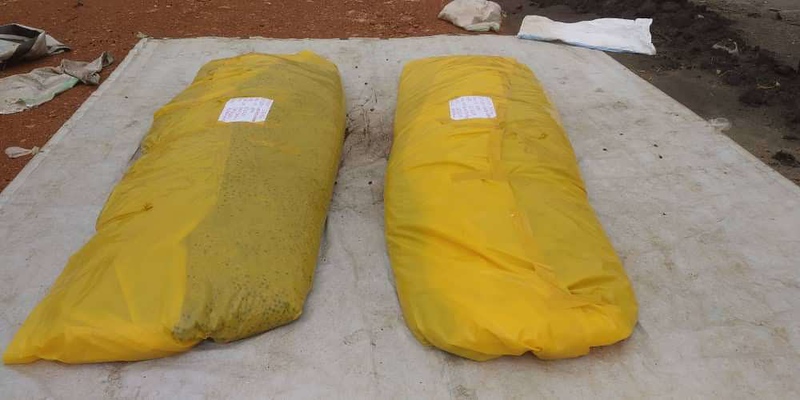
Semi-anaerobic 12 hour cherry fermentation in West Uganda. 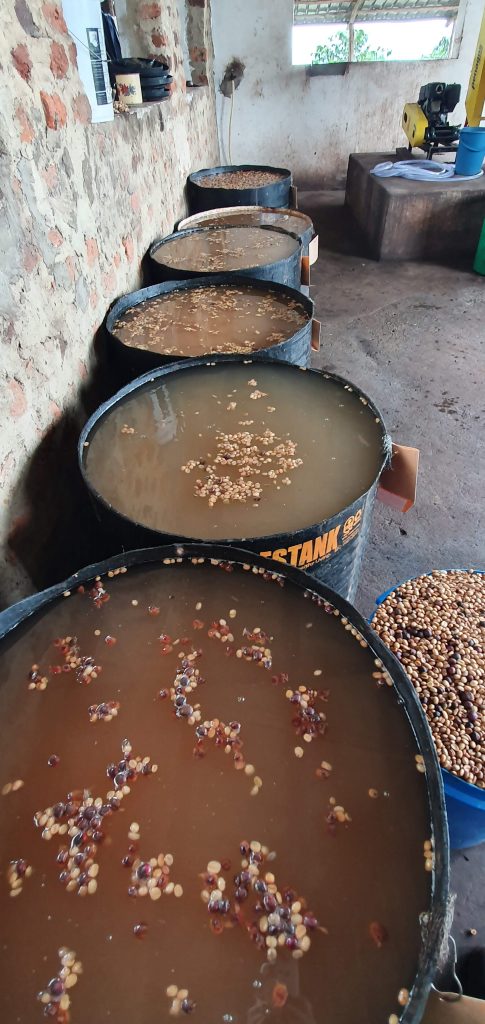
Skin contact fermentation at Kingha Estate.
Extended fermentation
This is a term we use for certain washed coffees. The producer deliberately prolongs the fermentation time to add more elaborate flavours to the coffee. There are two ways to extend the fermentation:
1. After picking the producer lets the coffee cherry sit in the collection bag, or in the reception tank, for hours, up to days, before depulping.
2. The producer extends the fermentation time at the parchment stage, i.e. when the coffee has been depulped and the parchment is soaking in water.
Skin contact
This is a term we have borrowed from the wine world. In this case the coffee has been depulped, then the producer adds the skin and fruit to the tank when fermenting the parchment. The coffee is then rinsed and dried like a washed coffee.
Saccharic and Lactic
These terms are used when the producer adds a specific strain of yeast or microbe to the coffee when it is fermenting, either as cherry or parchment. The most are Saccharomyces yeast and Lactobacillus bacteria.
Our definitions
You might have seen these two steps of post-harvest processing in our process definitions. Put the two together to understand the entire process after the cherries were picked. For example:
Anaerobic Natural
The coffee has been fermented without oxygen in cherry, then the cherries were placed directly on a bed, mat or patio to dry.
Semi-Anaerobic Natural
The cherries were fermented in an environment where oxygen has been limited, but can not be removed entirely, such as a polypropylene bag. The cherries are then placed directly on a bed, mat or patio to dry.
Skin Contact Washed
The cherries were depulped and the parchment was soaked in water, together with the skins and mucilage. The coffee is then rinsed, the skin and mucilage removed, and the parchment is placed on a bed, mat or patio to dry.
Our approach to special preps
We are excited by the unique profiles we have cupped and we know our roasters love them too, but we are also aware that these new processing and fermentation techniques are very risky for a producer.
Additionally, we are not interested in creating one-off crazy profiles that sell for extremely high prices. We want these coffees to be financially sustainable for our partners at origin.
We begin by selecting the right producer, one with a desire to innovate, plus the capacity and equipment to experiment. Secondly we ensure the experiments are run with scientific rigour to ensure that successes can be replicated year after year with increasing volumes. And finally, we pre-contract and sometimes pre-finance these coffees, to ensure the financial risk is not borne by the producer.
Curious about Special Preps?
Order some samples. Check the “Process” column on our offers list to find our special prep coffees. Click on the coffee name to order a sample, then be sure to let us know what you think.
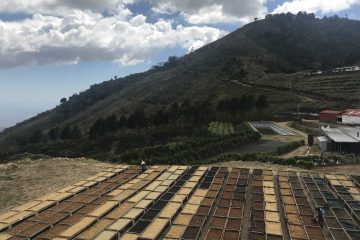
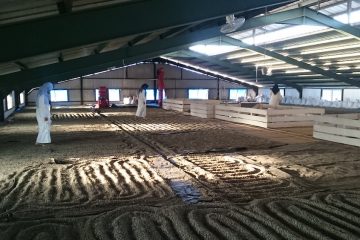
0 Comments